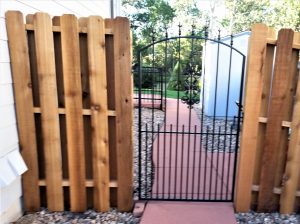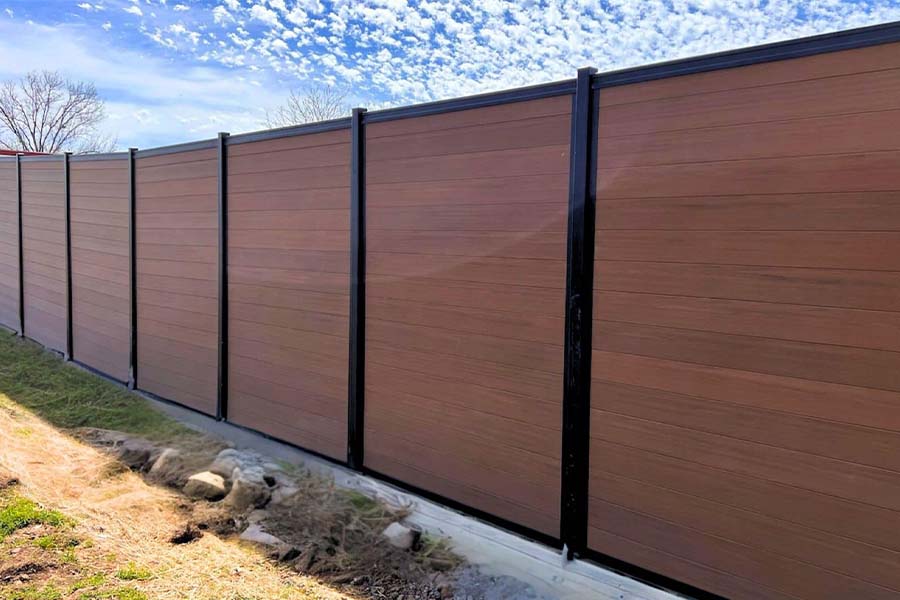All Categories
Featured
Your fence is just one of one of the most unveiled components of your residential property, frequently facing the challenges of transforming weather. Whether it's solid winds, heavy rainfall, or severe heat, weather condition can create substantial damages to your fence, bring about expensive repair work and even a complete replacement. Fortunately, there are several approaches you can implement to shield your fencing and expand its life-span. Below are some functional tips to secure your fencing from weather-related damage.
Vinyl Fence: Plastic is immune and highly durable to wetness, deteriorating, and bending. It additionally needs little maintenance and can hold up against severe climate condition without fading or fracturing. Steel Fence: Wrought iron or light weight aluminum fencings are strong and resilient versus wind and rainfall. They are vulnerable to corrosion over time if not properly safeguarded. Applying a rust-resistant layer can help protect their appearance and honesty. Composite Fencing: Made from a mix of timber fibers and plastic, composite fences combine the very best qualities of both materials. They're resistant to rot, pest, and decay damage while supplying the look of natural wood. By choosing the appropriate material, you can make sure that your fence is better furnished to hold up against the elements.
Dampness Security: Sealers create a waterproof barrier, stopping rainfall from permeating into the wood and creating rot or mold. UV Security: Sealants and spots obstruct UV rays, which can dry out and discolor the wood. Preserve Look: Regularly using a protective coating will preserve the fencing's natural beauty and avoid staining or fading. To make certain resilient security, reapply sealant or discolor every one to 2 years, depending on your climate and fence wear.
![]()
![]()
Additionally, cleaning your fencing can help remove dirt, mildew, and debris that can cause lasting damages. For wooden fencings, delicately stress wash the surface to eliminate crud, while vinyl fencings can be cleaned up with a mild cleaning agent option.
Verdict. Whether you're choosing the right products, applying safety finishes, or enhancing posts, these simple approaches can aid shield your fence from the elements, conserving you cash and expanding the lifespan of your fencing for years to come. Normal assessments and upkeep are essential to catching concerns early, so be sure to stay on top of your fencing's treatment throughout the periods.
- Choose Weather-Resistant Materials. Among the primary steps in shielding your fencing from weather-related damages is selecting the right material. Some products are naturally more immune to the aspects, decreasing the need for continuous repair services. :
Vinyl Fence: Plastic is immune and highly durable to wetness, deteriorating, and bending. It additionally needs little maintenance and can hold up against severe climate condition without fading or fracturing. Steel Fence: Wrought iron or light weight aluminum fencings are strong and resilient versus wind and rainfall. They are vulnerable to corrosion over time if not properly safeguarded. Applying a rust-resistant layer can help protect their appearance and honesty. Composite Fencing: Made from a mix of timber fibers and plastic, composite fences combine the very best qualities of both materials. They're resistant to rot, pest, and decay damage while supplying the look of natural wood. By choosing the appropriate material, you can make sure that your fence is better furnished to hold up against the elements.
- Safeguard Wood Fences with Sealers and Discolorations. Wooden fences are particularly at risk to moisture, UV rays, and extreme temperature levels. To secure your timber fence from these issues, using a high-grade wood sealer or tarnish is crucial.
Dampness Security: Sealers create a waterproof barrier, stopping rainfall from permeating into the wood and creating rot or mold. UV Security: Sealants and spots obstruct UV rays, which can dry out and discolor the wood. Preserve Look: Regularly using a protective coating will preserve the fencing's natural beauty and avoid staining or fading. To make certain resilient security, reapply sealant or discolor every one to 2 years, depending on your climate and fence wear.

- Strengthen the Fence Posts. Fencing messages are particularly prone to shifting and weakening as a result of climate condition. Wind, rain, and also freeze-thaw cycles can create articles to loosen up or lean gradually. To avoid this, think about reinforcing your fencing blog posts by setting up concrete footings or utilizing more powerful materials for article anchors. If you live in a location with heavy winds or seasonal frost, this included stability will help protect your fence from damages.
- Trim Surrounding Greenery. Tree branches and vines growing near or over your fence can trigger substantial damages in rainy weather condition. Not just will this secure your fence, yet it will certainly also boost the total look of your yard.
- Use Windbreaks. Wind is a significant variable in weather-related fence damages. A windbreak acts as an obstacle that minimizes the direct impact of wind on the fencing, protecting against damage from high winds and gusts.

- Address Water Drainage Issues. Poor drainage is a major factor to fencing damage, specifically for wood fences. Water that accumulates around the base of fence articles can cause them to rot in time. Make certain that the ground around your fencing has appropriate drainage so water doesn't swimming pool and cause degeneration. Installing a French drainpipe or including crushed rock around the base of the posts can help guide water away from the fencing. This simple solution can make a big distinction in preventing moisture damage and maintaining your fencing.
- Normal Evaluations and Maintenance. Routine maintenance is essential for safeguarding your fencing from weather damages. Inspect your fencing frequently, especially after severe weather condition occasions, to identify any indicators of damage.
Additionally, cleaning your fencing can help remove dirt, mildew, and debris that can cause lasting damages. For wooden fencings, delicately stress wash the surface to eliminate crud, while vinyl fencings can be cleaned up with a mild cleaning agent option.
- Use a Rust-Resistant Layer to Steel Fencings. Steel fencings, particularly those constructed from iron or steel, are vulnerable to rust when subjected to dampness and humidity. To protect your metal fence from rust, use a rust-resistant coating or paint. Ensure that the coating is designed for outside use and can hold up against the elements. Sand them down and repaint the influenced locations to prevent additional corrosion. if you notice any type of rust areas.
Verdict. Whether you're choosing the right products, applying safety finishes, or enhancing posts, these simple approaches can aid shield your fence from the elements, conserving you cash and expanding the lifespan of your fencing for years to come. Normal assessments and upkeep are essential to catching concerns early, so be sure to stay on top of your fencing's treatment throughout the periods.
Latest Posts
Discover the Signature Specials at Deauville Inn
Published Apr 18, 25
1 min read
Why Trust NAPA AutoCare? Montclare Auto Repair Is Your Trusted Choice
Published Apr 18, 25
2 min read
Versatile Funding and Leasing Options at Hyundai of Akron
Published Apr 18, 25
1 min read